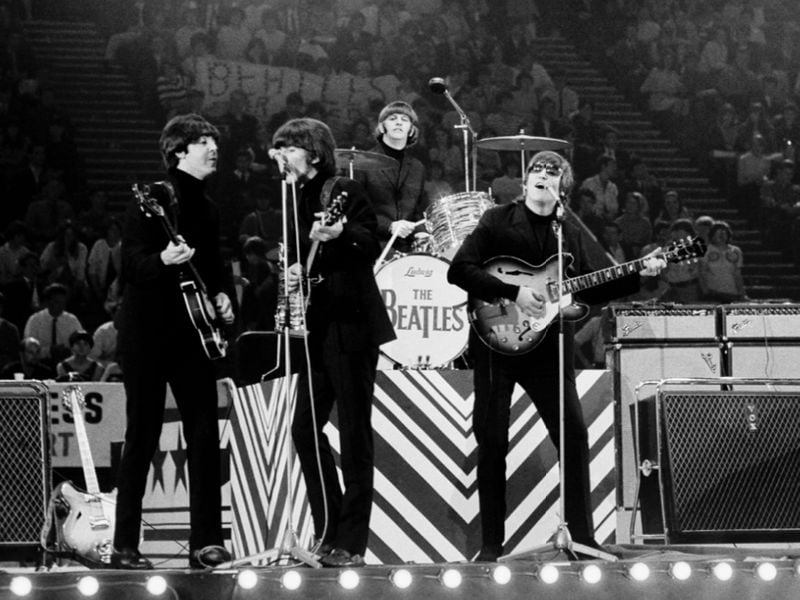By August 29th, 1966, The Beatles were done with America. Although it had been just over two years since the band broke big in the U.S.A., things were noticeably different when the group embarked on their third tour of the country. Whereas previous jaunts had been chaotic and eccentric in a good way, the 1966 tour turned out to be a shift toward the ugly and dangerous.
After suffering through a rough tour of Japan and the Philippines earlier in the summer, John Lennon, George Harrison, and Ringo Starr all expressed interest in putting a permanent stop to touring. Paul McCartney was resistant at first, but after two weeks of death threats, religious controversy, and subpar live sound, McCartney began to agree with his bandmates.
The same month that the U.S. tour was announced, Lennon commented on religion to journalist Maureen Cleaver which included remarks that positioned The Beatles as being “more popular than Jesus.” The comments didn’t even get a response from the British public, but just a few weeks before the tour was set to begin, American radio stations in the south began to boycott the band over Lennon’s comments. When The Beatles landed in America, they were greeted with organised burnings of their records and calls for Lennon to apologise or face increasingly hostile threats.
Apart from the controversy, The Beatles’ music had grown increasingly complex in the years since their first tour of America. The band’s then-recent release, Revolver, contained psychedelic experimentations that were impossible to replicate on stage. The only recent song to find its way into the setlist was the hard rock single ‘Paperback Writer’, and only two tracks from their previous release Rubber Soul, ‘Nowhere Man’ and ‘If I Needed Someone’, were included as well.
Instead, the band had to rely on the early rock and roll covers and classic mop top-era material that they had outgrown by that point. With concerts flanked by Ku Klux Klan members and a raised tension from the band’s outspoken opposition to the Vietnam War, it had already been decided that the American tour would be the last live shows that the band would do for the foreseeable future.
San Francisco’s Candlestick Park was just the last in a long line of stadiums that The Beatles were playing at the time. After the massive success of their Shea Stadium show in New York the previous year, every tour stop on the 1966 trek was a stadium. With the large venues came disappointing sound quality, and when compounded with the screaming fans’ voices echoing throughout the venues, it made for an uncomfortable and unenjoyable experience for the band to play. 7,000 unsold tickets also put a damper on the group’s final concert.
But The Beatles had a job to do, so they dutifully took the stage around 9:30 PM and proceeded to play their standard 11-song set. Leading off with Lennon’s cover of Chuck Berry’s ‘Rock and Roll Music’, the band blasted through a half-hour of uptempo music that nonetheless felt rote and well-worn by that point. New additions like ‘Day Tripper’ added a new dimension to the shows, but Starr was still singing ‘I Wanna Be Your Man’ like he had for the previous three years.
The only moments of respite from the uptempo runs were the waltz-adjacent shuffle ‘Baby’s In Black’ and McCartney’s tender ballad ‘Yesterday’. Inclusions of singles like ‘She’s a Woman’ and ‘I Feel Fine’ rounded out the relatively brief setlist, and when it was time to check out, McCartney stepped to the mic and delivered a final frantic version of Little Richard’s ‘Long Tall Sally’ to put a cap of The Beatles’ live performing career.
On their way back to England, there was uncertainty about how the band would move forward or if they even would at all. Harrison was of the mind that his time in The Beatles was over, but McCartney had other plans. After a few months of rest that allowed Lennon to film How I Won the War, McCartney gathered his bandmates together and proposed a novel idea – a return to performing, only as a completely different band. This concept eventually blossomed into what would become Sgt. Pepper’s Lonely Hearts Club Band, representing a full embrace of the studio and The Beatles’ new home.
The Beatles setlist, August 29th, 1966:
*‘Rock and Roll Music’ (Chuck Berry cover)
*‘She’s a Woman’
*‘If I Needed Someone’
*‘Day Tripper’
*‘Baby’s In Black’
*‘I Feel Fine’
*‘Yesterday’
*‘I Wanna Be Your Man’
*‘Nowhere Man’
*‘Paperback Writer’
*‘Long Tall Sally’ (Little Richard cover)



